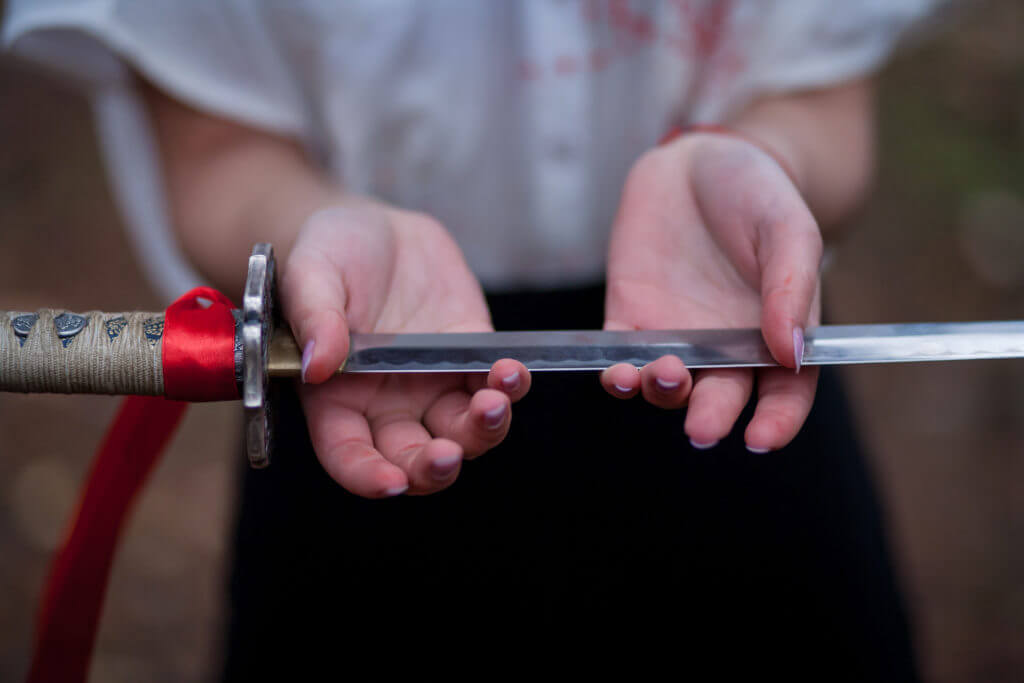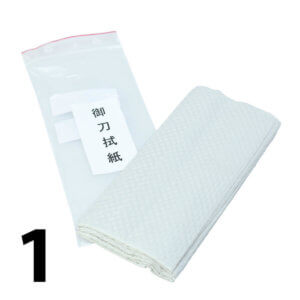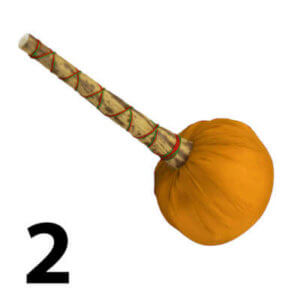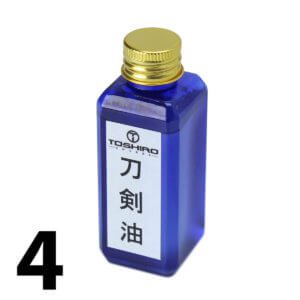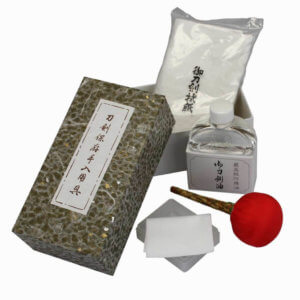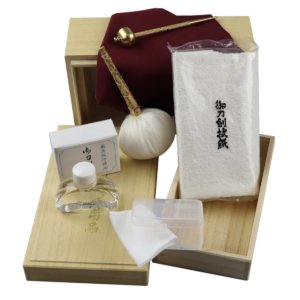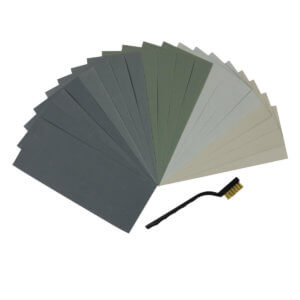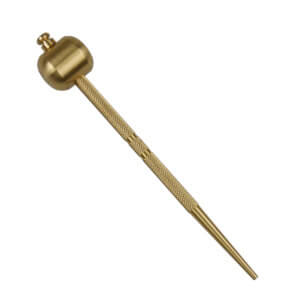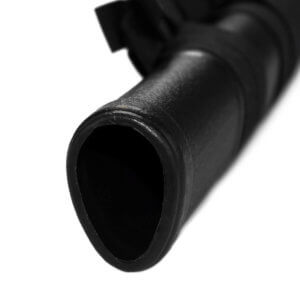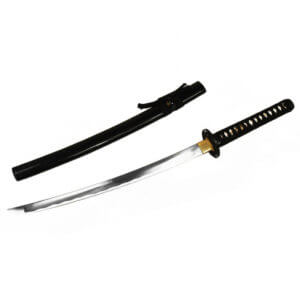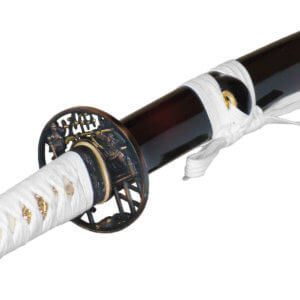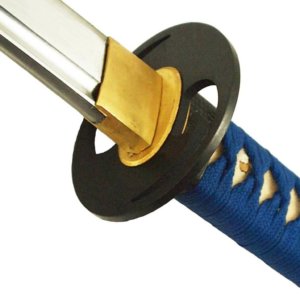Here you will find instructions on how to properly care for your samurai sword. We recommend a sword care set or equivalent care utensils.
You are welcome to share the following information with friends and acquaintances. However, we expressly prohibit the copying of the complete description or parts of it for commercial use.
Typical accessories for sword care:
1: Soft cellulose cloths for sword cleaning
Preferably a cellulose cloth or similar natural material that has not been treated with chemicals. The cloth is needed to remove dirt, old oil and sword powder. A cloth that binds substances well should therefore be used.
To prevent old soiling from being reapplied to the blade, it makes sense to use cloths that can be disposed of after a few uses. This is the only way to ensure that old dirt is not reapplied to the blade. Suitable Cellulose wipes can be found in our shop.
2: "Powder" for sword training
This is contained in a tassel and together with it is called uchiko. It is used to bind moisture, old oil and dirt and remove them from the blade surface. A distinction should be made between talcum powder and limestone powder. You can find out when it makes sense to use which and more details in our Article about sword powder.
3: A soft cotton cloth for applying sword oil
A soft cotton cloth should be used to apply sword oil. The ideal cloth absorbs oil, but also releases it again. In contrast to the cloth in point 1, it should not bind the oil but release it onto the blade in the right quantity. This requires a suitable fabric structure. As it is only used when the blade has already been completely cleaned, this cloth can be used again and again. Suitable Cotton cloths for sword care you can buy from us.
4: Sword oil for blade care
This is often referred to as choji oil. This is actually the name for clove oil, but the term is often also used for other heavy oils.
Some sword oils on the market, "insider tips" and household remedies are hazardous to health and/or not suitable for sword care.
We provide you with the specially developed sword care product Blade oil from Toshiro Swords.
Sword care products from our shop:
Sword care instructions:
1. removal of impurities
Very coarse soiling that could scratch the blade should first be carefully "dabbed" off the blade.
Remove the remaining dirt with a soft cloth (image 1). Use the cloth to gently pull the blade away from the tsuba towards the tip. Always keep the sharp side of the blade away from your body and take care of your hands, as a cut can happen quickly!
2. application of the powder
Now apply the Uchiko to the blade by tapping lightly on the back and sides of the blade with the ball (Fig. 2) (approx. every 5 cm). Never tap the cutting edge of the blade! As the powder is very fine, it should not come into contact with your eyes and should not be inhaled!
3. remove the powder
Now wipe off the powder with a soft cloth (Fig. 1). Always wipe from the direction of the tsuba towards the tip of the blade. Repeat steps 2 and 3 until the blade is completely free of dirt and old oil. Do not attempt to remove stubborn dirt or scratches by rubbing excessively in a single area, as this often damages the surface of the blade.
4. oiling the blade
Drip oil (Fig. 4) onto a soft, clean cloth (Fig. 3). Then spread the oil evenly with the cloth from the tsuba towards the tip. In the end, only a thin coating of oil should be visible on the blade. Under no circumstances should the oil drip from the blade, droplets form on the blade or "free areas" without oil be visible on the blade.
Many oils contain substances that are harmful to health and should only be used in well-ventilated rooms for safety reasons, and should not come into contact with the skin or be inhaled, as described in the Article about different sword oils is described. As mentioned above, we recommend the sword oil from Toshiro Swords, which is relatively harmless.
The maintenance process is then complete.
The maintenance process should be repeated at the latest after the next sporting use, as soon as the old oil on the blade is no longer liquid or if it is necessary due to soiling. Regardless of this, we recommend carrying out maintenance at least every 4 weeks.
Summary of the safety instructions
- If possible, the edge of the blade should be kept away from your own body during the entire care procedure.
- When caring for very sharp swords, it is easy to cut your hands, so you should pay close attention to every movement.
- Uchiko powder is very fine and should be kept away from eyes and mucous membranes and should not be inhaled. The powder should therefore also be kept out of the reach of children.
- The sword oils available on the market have a wide variety of ingredients. For safety reasons, we recommend applying sword oil in a ventilated room, not breathing in the vapours of the oil and keeping the oil away from eyes and mucous membranes. The oil should also be kept out of the reach of children.
Summary of instructions for the benefit of the sword
- Suitable cloths should be used for sword care. These should be made of natural material, not treated with chemicals (e.g. bleached) and sufficiently soft.
- Uchiko powder should not be rubbed excessively on a single area.
- The blade should be completely coated with a film of oil at the end. Exposed areas are susceptible to rust.
- As always, the blade should not be touched with bare hands.
Addendum to the removal of the sword handle
Traditionally, many sword care sets also include a brass hammer for removing the Mekugi. With the mekugi removed, the handle can then be detached from the blade tang. However, this is rarely really necessary. The tang itself is not usually maintained. If the handle or the blade is replaced, the handle must of course be detached. However, this is not part of "everyday" sword care. If dirt accumulates under the Habaki If the blade has collected dirt or this area shows signs of rusting, the handle should be removed to clean the area under the habaki. If the blade is only ever pulled from the tsuba towards the tip, no dirt should actually collect there.
Especially with swords produced outside Japan, the handle is often fixed to the tang and then has play when it is removed and then refitted. It is therefore best not to remove the handle from such swords at all. Or at least be aware that it will need to be readjusted after removal.
The complete sword care in one video:
The care instructions naturally refer to blades made of non-stainless steel. Most samurai sword blades are made of stainless steel. You can find a detailed overview of common types of steel here here.

